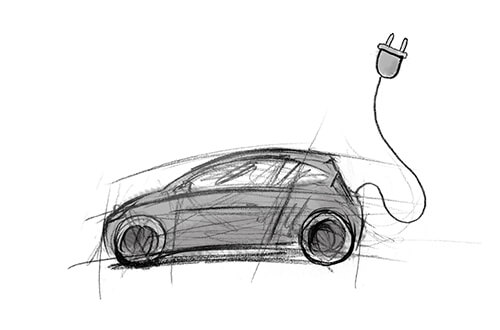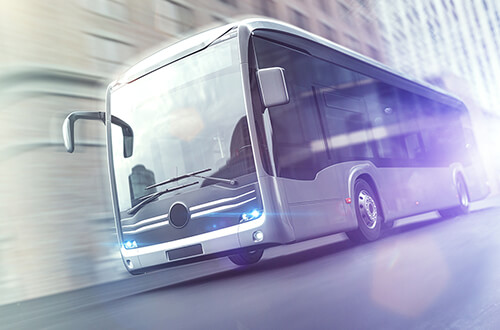|
|
|
|
|
|
|
|

Rechargeable car battery: a way of reducing CO2?
CO2 is one of the main causes of global warming and moving vehicle traffic is a major contributor to CO2 emissions. Emitting less CO2 with an electric car than with a combustion engine means no more smog in the inner city, but people still remain mobile: that sounds almost too good to be true. In fact, the life-cycle assessment of electric cars is controversial. However, recent studies show that fully and partially electric vehicles offer an exciting opportunity to reduce CO2.
The keypoints in short
- Thanks to engines without combustion, CO2 can be saved when operating an electric car, provided that the cleanest possible electricity is used.
- The life-cycle assessment of electric cars and electric vehicles is improving all the time. Manufacturers are making great strides in both the production, operation and recycling of batteries.
- With modern functions such as recuperation, e-cars drive even more efficiently. HELLA supplies the technological components for this.
Battery systems for low-emission mobility
Environmental protection is a major challenge for society and even more so for the automotive sector. That is why we at HELLA are monitoring the current trends towards alternative drives. How can hybrid or electric vehicles reduce CO2 emissions?
First, however, a distinction must be made between all-electric and hybrid vehicles. Both run on electricity and therefore have an electric motor, but hybrid cars use an additional combustion engine to support the electric motor. Hybrid vehicles are also divided into plug-in hybrids and standard hybrids: while the battery of a standard hybrid is charged by recovered kinetic energy, a plug-in hybrid can be connected to the normal power grid via a plug. Therefore, there are high demands placed on battery management and batteries in all electric vehicles.
HELLA is also involved with the functions of modern battery systems that reduce CO2 and supplies the components for smart energy management. This, together with the efficient production of batteries and the availability of green electricity for charging, can significantly improve the life-cycle assessment of electric vehicles in the future.
Modern vehicles are true marvels of technology.
Functions of electric cars that save CO2
Even now, electric vehicles often perform better in the life-cycle assessment than diesel or petrol vehicles, as studies regularly show. From the production of vehicles and their batteries to their operation and recycling, manufacturers and research institutions continue to learn and optimise the life-cycle assessment of electric vehicles. Yet even more CO2 can be saved with an electric car – even aside from production and electricity generation. Various functions make it possible to drive an e-car even more efficiently, more economically and, as a result, in a more environmentally friendly way.
Recuperation
Recuperation comes from Latin and means recovery. This means the option of immediately converting the heat that is usually generated during braking into electrical energy instead, which recharges the electric car battery. This basically works like a bicycle dynamo and can increase the electric vehicle’s range by up to 20 % in an ideal scenario.
The effect of recuperation on the electric car's life-cycle assessment relies on battery management. HELLA supplies highly efficient battery management systems for the low and high-voltage range, contributing towards the electrification of automotive engineering.
Boost
Another method of avoiding CO2 emissions with a hybrid vehicle is boost mode. For a few seconds, the boost can be used to provide a significant power increase, for example for initial acceleration. This means that the combustion engine is kept at a constant operating level and, as a result, has a more even consumption.
Similar to recuperation, the boost system's energy management is crucial for efficiency and economy. This is why HELLA is also developing the latest generation of intelligent battery sensors for the boost.
The functions are finely tuned to one another.
Coasting
The term coasting is used to describe the car gliding in neutral or with the engine switched off in order to save energy. At sufficient speed, hybrid vehicles can switch off the combustion engine and continue to roll using only the available kinetic energy. Therefore, coasting is part of the hybrid drive concept. However, this function often conflicts with recuperation, which brakes the car when no accelerator is applied. Some manufacturers therefore dispense with recuperation in favour of coasting.
With intelligent components for motor control and for communication between systems, HELLA is helping to make e-car driving even more environmentally friendly, whether through coasting, boost, recuperation or a mixture of all approaches. Read more about HELLA's energy management and innovative components here.
Environmental awareness – a given for HELLA
To ensure that the new generation of electric cars has an even better life-cycle assessment, HELLA works hand in hand with manufacturers and relies on modern technologies to save CO2 in electric vehicles. But that is not all: For its own production, HELLA has set itself the goal of being climate neutral in its production by 2025. To this end, the expansion of green electricity generation is being driven forward and, in the long term, the aim is also to achieve a climate-neutral supply chain.
You will find some further information about the HELLA Sustainability Report here.




